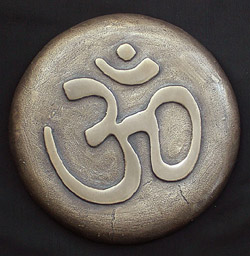|
|
|||||||||
“Yoga is the concentration which restricts the fluctuations. Freed from them, the Self attains to self-expression”.[1]
The term „yoga“ is derived from the Sanskrit word „yuj“, which means to unite or to yoke. The origins of the word and practice of yoga are closely related since practicing yoga involves an effort to unify spirit, mind and body in order to reach tranquillity and happiness within the inner self. Yoga is a spiritual path. Over time, it has become related to both Buddhism and Hinduism. As an essentially inner discipline, yoga is associated with special techniques of spiritual development, leading ultimately to man’s release from the bonds of the outer, phenomenal order. There is a great variety of yogic practices, whose common objective lies in a conscious, studied and sustained effort at disciplining man’s mind and body. As a result, the inner self (“purusha”) can be released from time to eternity, from the conditioned world into unconditioned being, and from division to unity. Yoga originated in northern India more than 3500 years ago. Basically, it belonged to the ascetic, disciplined, solitary and meditative Indian tradition. Developed in spoken and visual conventions and passed down from teachers to students, yoga was not written down for many thousands of years. Only around the second century B.C., the philosopher Patañjali began to organise and write down fundamental principles of yoga. Patañjali’s collection is widely known as Yoga Sutras. This basic work comprises some 194 aphoristic statements arranged in an ordered series, which can be divided in four analytical groups: “samadhi” (concentration), “sadhana” (means of attainment), “vibhuti” (supernormal powers) and “kaivalya” (isolation).
Although yoga aims at a liberation of man into the realms of the infinite and unconditioned, it also enables him to function simply and more efficiently in everyday life. Yoga strengthens both the mental and physical powers and provides awareness, endurance and the capacity for determined allocation of energies. To its practitioner yoga gives an extraordinary control over himself so that he gradually becomes less and less distracted and enervated by what he does. The entire effort of yoga is best described as a constant inner movement and a life-long individual path. There are seven main types of yoga. Although their specific focus is slightly different, all types of yoga work on the fundamental unity of mind, body and spirit:
|
|||||||||
|
|
|||||||||



